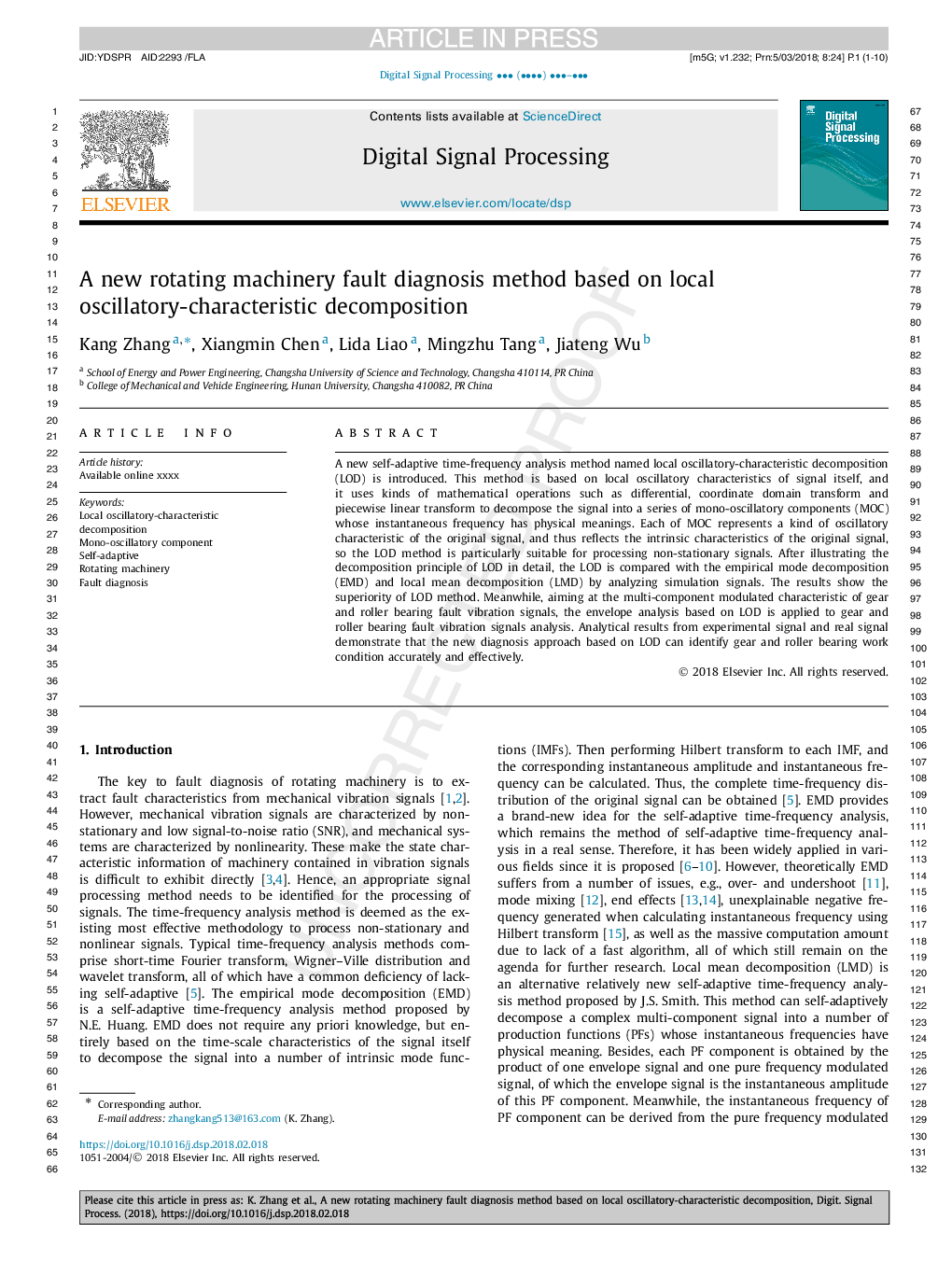| Article ID | Journal | Published Year | Pages | File Type |
|---|---|---|---|---|
| 6951711 | Digital Signal Processing | 2018 | 10 Pages |
Abstract
A new self-adaptive time-frequency analysis method named local oscillatory-characteristic decomposition (LOD) is introduced. This method is based on local oscillatory characteristics of signal itself, and it uses kinds of mathematical operations such as differential, coordinate domain transform and piecewise linear transform to decompose the signal into a series of mono-oscillatory components (MOC) whose instantaneous frequency has physical meanings. Each of MOC represents a kind of oscillatory characteristic of the original signal, and thus reflects the intrinsic characteristics of the original signal, so the LOD method is particularly suitable for processing non-stationary signals. After illustrating the decomposition principle of LOD in detail, the LOD is compared with the empirical mode decomposition (EMD) and local mean decomposition (LMD) by analyzing simulation signals. The results show the superiority of LOD method. Meanwhile, aiming at the multi-component modulated characteristic of gear and roller bearing fault vibration signals, the envelope analysis based on LOD is applied to gear and roller bearing fault vibration signals analysis. Analytical results from experimental signal and real signal demonstrate that the new diagnosis approach based on LOD can identify gear and roller bearing work condition accurately and effectively.
Related Topics
Physical Sciences and Engineering
Computer Science
Signal Processing
Authors
Kang Zhang, Xiangmin Chen, Lida Liao, Mingzhu Tang, Jiateng Wu,
